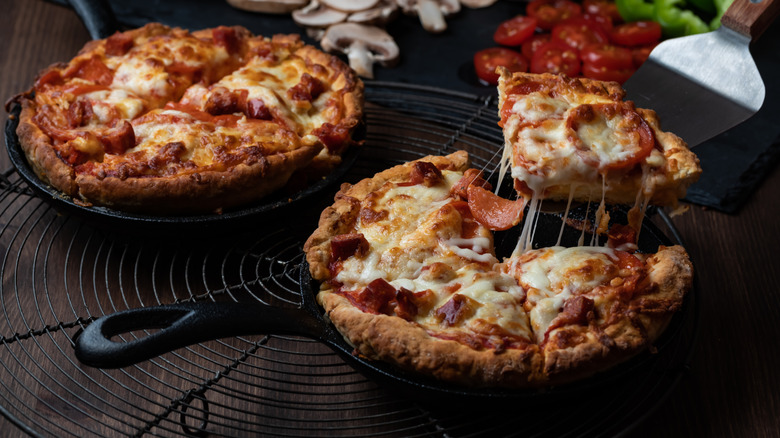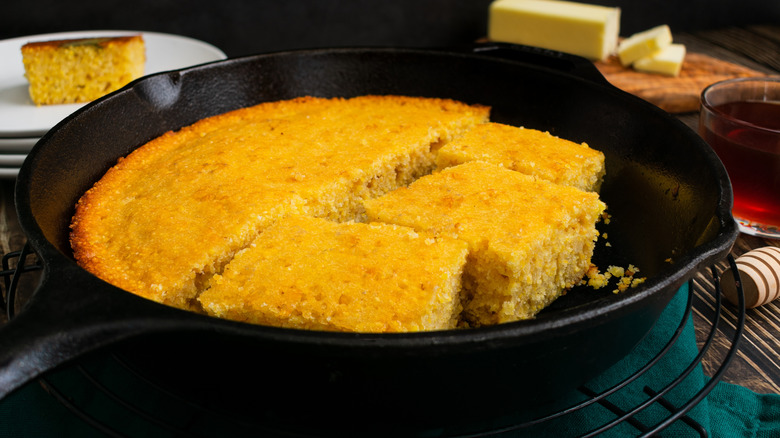The Timing Rule To Keep In Mind When Baking With Cast Iron
Cast iron pans may typically be used for stove-top cooking. But they can certainly withstand the heat of an oven since they're built to take temperatures up to 650 degrees Fahrenheit, and most ovens max out at 500 to 550 degrees. For this reason, they can be used for a wide range of items, including cooking deep-dish pizza (upside-down or otherwise), making cornbread, upgrading store-bought cinnamon rolls, or trying our recipe for buttermilk biscuit tarte tatin. Because cast iron handles the heat differently than standard cake pans, however, you may need to shorten your baking time a bit for the best results.
There is no hard and fast rule for how to alter a recipe's timing when you bake it in a cast iron pan, but as a general guideline, you'll need to knock at least a few minutes off the amount of time given in the directions. Try setting your times for at least five minutes before the recipe says to do so, or maybe even 10 to be on the safe side. At this point, check the item you're baking to see if it looks and feels done. If this isn't readily apparent, you can use the famous toothpick test, where you stick a small wooden skewer in the middle to see if it comes out clean. If it's covered with wet batter, give your item another five minutes before checking again.
More tips for baking in cast iron
Besides reducing the amount of time called for in the recipe, there are a few more preparations you'll need to take to be successful when baking in cast iron. For one thing, you'll need to grease the pan. Unless it's extremely well-seasoned, cast iron may not necessarily be nonstick, especially the enameled kind. Adding flour to the pan grease will help your baked goods to release even more easily. You can use a commercial product like Baker's Joy that combines oil and flour, or make a DIY version by mixing equal amounts of shortening, oil, and flour.
If you want a super-crispy crust, it's crucial to preheat your cast iron pan before adding the dough or batter. If you're baking a cake or something similar where you'd rather the outside stay soft, it's better to go with a cool pan. (The oven, however, still needs preheating.)
Once you're done baking, run a knife around the edge of the pan to loosen your masterpiece, then allow it to cool for about five minutes before flipping it over to release it — this is where the grease and flour combo really shows its worth. It's best not to store baked goods in cast iron for too long since doing so can cause the pan to rust, so take any leftovers out before storing them.

